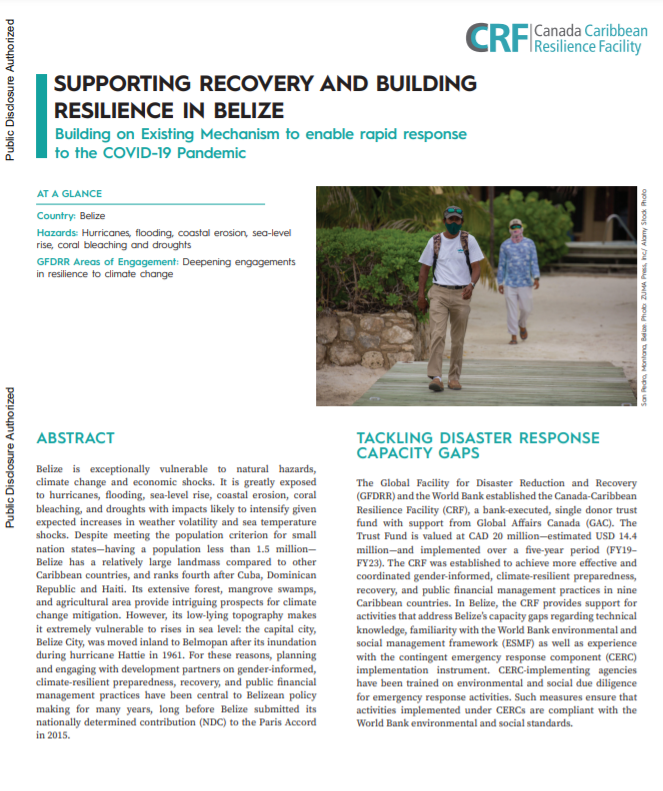Belize is exceptionally vulnerable to natural hazards, climate change and economic shocks. It is greatly exposed to hurricanes, flooding, sea-level rise, coastal erosion, coral bleaching, and droughts with impacts likely to intensify given expected increases in weather volatility and sea temperature shocks. Despite meeting the population criterion for small nation states - having a population less than 1.5 million - Belize has a relatively large landmass compared to other Caribbean countries, and ranks fourth after Cuba, Dominican Republic and Haiti. Its extensive forest, mangrove swamps, and agricultural area provide intriguing prospects for climate change mitigation. However, its low-lying topography makes it extremely vulnerable to rises in sea level: the capital city, Belize City, was moved inland to Belmopan after its inundation during hurricane Hattie in 1961. For these reasons, planning and engaging with development partners on gender-informed, climate-resilient preparedness, recovery, and public financial management practices have been central to Belizean policy making for many years, long before Belize submitted its nationally determined contribution (NDC) to the Paris Accord in 2015.
Canada-Caribbean Resilience Facility: Supporting Recovery & Building Resilience In Belize
January 29, 2020 Read this publication

